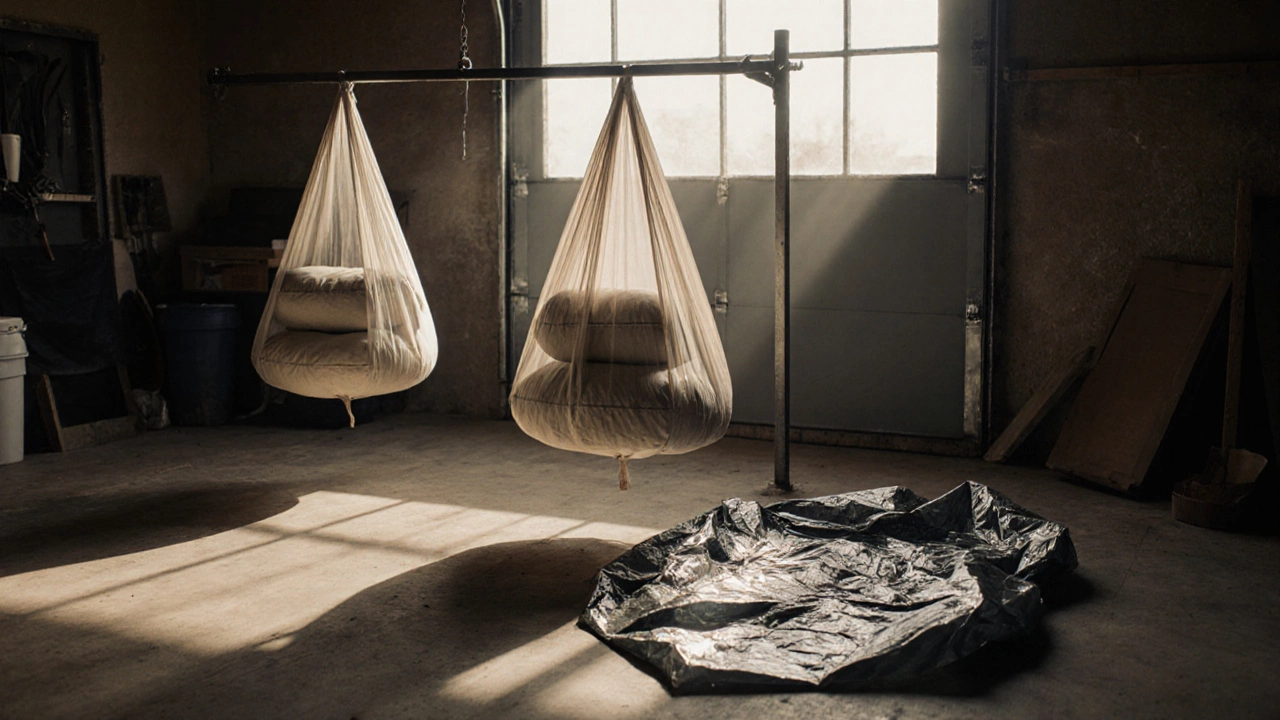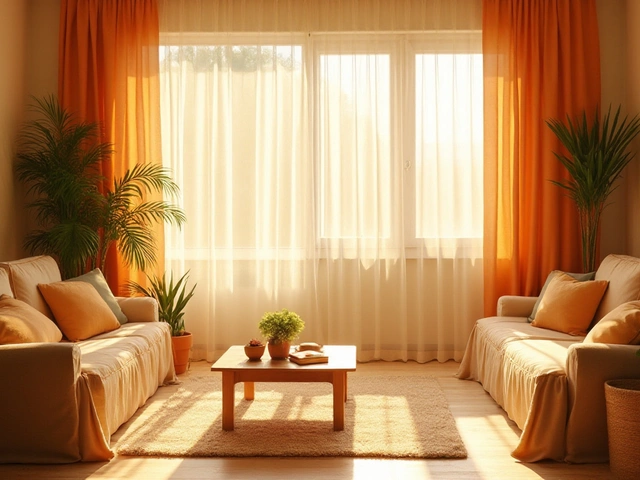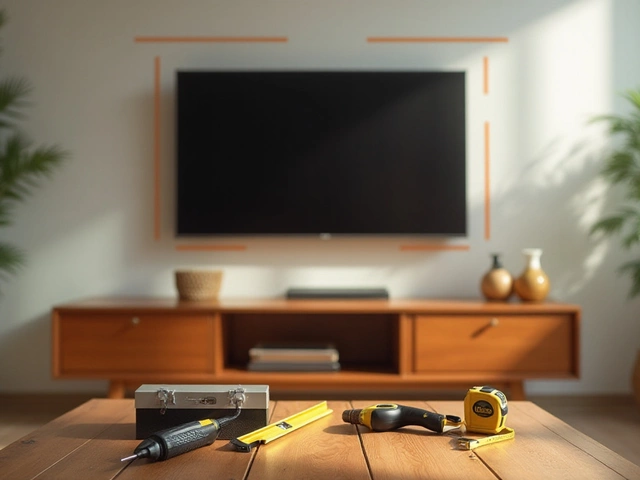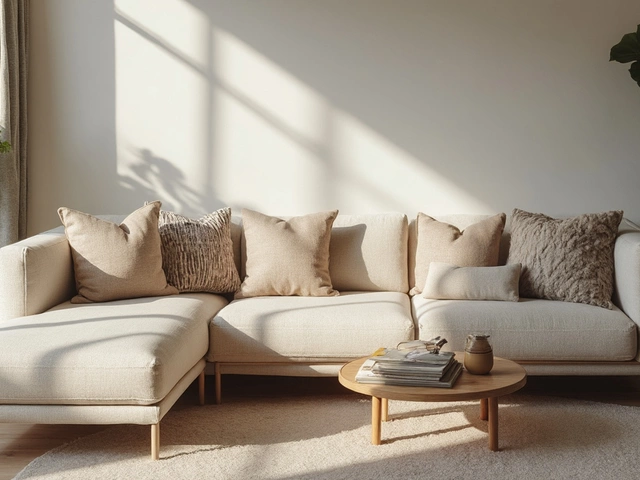
Garden Cushion Mould Risk Calculator
Assess Your Cushion Risk
Answer these questions to calculate your mould risk score and get personalized prevention tips.
Nothing kills the vibe of a sunny afternoon on the patio faster than spotting dark, fuzzy patches on your garden cushions. Mould doesn’t just look bad-it smells worse, stains fabric, and can even trigger allergies. If you’ve ever spent hours scrubbing cushions only to see the mould come back in a week, you’re not alone. The problem isn’t your cleaning skills. It’s how you store and care for them.
Why garden cushions get mouldy
Mould thrives in damp, warm, dark places. Garden cushions are perfect targets. Even if you bring them in at night, moisture gets trapped inside the foam or fabric. Rain, dew, humidity-even morning condensation-adds up. In places like Wellington, where it rains 150+ days a year, the problem is worse than in drier climates.
The foam inside most cushions isn’t waterproof. It soaks up moisture like a sponge. When that moisture sits for more than 24-48 hours, mould spores wake up and start growing. Synthetic fabrics like polyester or acrylic don’t breathe well, so they hold onto dampness longer than natural fibres. And if you leave cushions stacked on top of each other or tucked under a table? That’s a mould factory.
Step 1: Choose the right cushions
Not all outdoor cushions are made equal. Look for ones labeled water-resistant and quick-dry. These have special foam cores-usually open-cell polyurethane or high-density foam with drainage channels-that let water flow out instead of soaking in.
Check the fabric too. Sunbrella, Outdura, and Dickson are top brands that use solution-dyed acrylic. These don’t absorb water the way cotton or standard polyester does. The colour is locked into the fibre, so it won’t fade or stain easily. Avoid cotton blends-they look nice but turn into mould magnets after one rainy week.
When buying new cushions, ask: "Is the foam hydrophobic?" If the salesperson doesn’t know, walk away. You’re better off with cheaper cushions you replace yearly than expensive ones that rot in six months.
Step 2: Dry them properly after rain
Don’t just wipe them off. That’s like putting a bandage on a broken bone. You need to get the moisture out of the core.
After rain or heavy dew, flip cushions over and prop them up on their sides. Use a wooden pallet, bricks, or even a garden stool to lift them off the ground. Air needs to circulate under and around them. If you’ve got a shaded patio, move them into the sun for a few hours. UV light kills mould spores.
Pro tip: If you live somewhere with high humidity, run a fan near your seating area in the evening. Even a small oscillating fan on low helps dry out trapped moisture overnight.

Step 3: Store them correctly in winter
Leaving cushions outside all year is the #1 reason they turn into mould nests. You don’t need a fancy shed. A dry, ventilated space is enough.
Before storing:
- Wipe off dirt with a damp cloth.
- Let them air dry completely-no shortcuts. Even a little dampness left behind will grow mould in storage.
- Store them upright, not stacked. Use a breathable storage bag (like cotton or mesh), not plastic. Plastic traps moisture. A ventilated plastic bin with a lid is okay if it’s kept in a dry garage or under a covered porch.
Never store cushions in a damp basement, under a leaky deck, or in a plastic bin on concrete. Concrete wicks moisture up like a sponge. Keep them off the floor.
Step 4: Clean mould before it spreads
If you already see mould, don’t panic. You can fix it-unless it’s been sitting for months. Early-stage mould is easy to remove.
Here’s what works:
- Brush off loose spores with a soft-bristle brush outside. Don’t do this indoors-you’ll spread spores everywhere.
- Make a solution: 1 cup white vinegar, 1 cup water, and 1 tablespoon of baking soda. Mix it in a spray bottle.
- Spray the affected areas generously. Let it sit for 1 hour. Don’t rinse yet.
- Scrub gently with a sponge or soft brush. Focus on seams and creases where mould hides.
- Rinse with clean water. Let dry completely in the sun.
Never use bleach on outdoor cushions. It weakens the fabric, fades colours, and doesn’t kill mould roots in the foam. Vinegar penetrates deeper and is safe for most fabrics.
Step 5: Use a mould-preventing spray
Once your cushions are clean and dry, protect them. There are commercial products made for this-like 303 Fabric Guard or Star brite Mold & Mildew Inhibitor. They create a barrier that repels water and stops mould spores from settling.
Apply it after cleaning and again every 3-6 months. Spray lightly and evenly. Don’t oversaturate. Let it dry for 24 hours before using the cushions again.
It’s not magic, but it’s the closest thing. People who use it regularly say their cushions stay clean for two years or more.

What doesn’t work
Here’s what to avoid:
- Leaving cushions under a tarp all winter-tarp traps moisture and creates a steam room for mould.
- Using a pressure washer-too harsh. It tears fabric and forces water into the foam.
- Washing in a machine-most outdoor cushion cores aren’t machine-safe. You’ll ruin the shape and drainage.
- Putting them in the dryer-heat melts foam and shrinks fabric.
Some people swear by tea tree oil or essential oils as natural mould killers. They help a bit, but they don’t last. You’d need to reapply every week. Vinegar and commercial protectants are more reliable.
Real-life fix: My Wellington patio
Last year, my garden cushions were covered in black spots by April. I tried everything-scrubbing, drying, even buying new ones. Nothing worked. Then I did three things:
- I switched to Sunbrella cushions with quick-dry foam.
- I started lifting them off the ground with wooden blocks after every rain.
- I sprayed them with 303 Fabric Guard every autumn.
This year? No mould. No smell. No scrubbing. Just clean, comfortable seating every weekend.
Quick checklist to keep mould away
- ✅ Choose water-resistant, quick-dry cushions
- ✅ Dry cushions upright after rain
- ✅ Never store damp cushions
- ✅ Use breathable storage bags
- ✅ Clean mould with vinegar + baking soda, not bleach
- ✅ Spray with mould inhibitor every 3-6 months
- ✅ Keep cushions off concrete and out of plastic bins
If you follow these steps, your cushions will last 3-5 years instead of 1. That’s not just saving money-it’s saving your weekends.
Can I wash garden cushions in the washing machine?
Most outdoor cushion cores are not designed for machine washing. The agitation can break down the foam, flatten the shape, and trap water inside. Always check the care label. If it says "hand wash only," don’t risk it. Spot clean with vinegar and water instead.
How often should I clean my garden cushions?
Clean them at least once a season-spring and autumn. If you live in a rainy or humid area, clean them every 2-3 months. Spot-clean spills and bird droppings right away. Regular cleaning stops mould from taking hold.
Is mould on cushions dangerous?
Yes. Mould spores can trigger allergies, asthma, and respiratory irritation, especially in kids and older adults. If you’re sneezing or getting itchy eyes after sitting outside, mould could be the cause. Don’t ignore it. Clean it, or replace the cushions.
Should I cover my garden cushions with a tarp?
Only if the cover is breathable and lifted off the cushions. A plastic tarp pressed directly on damp cushions creates a humid environment that encourages mould. Use a ventilated cushion cover or store them indoors instead.
What’s the best time of day to dry garden cushions?
Midday, when the sun is strongest. UV light kills mould spores, and warmth helps moisture evaporate. If it’s cloudy or rainy, use a fan or bring them inside to dry near a window. Avoid drying them overnight-dew will just settle back on them.



